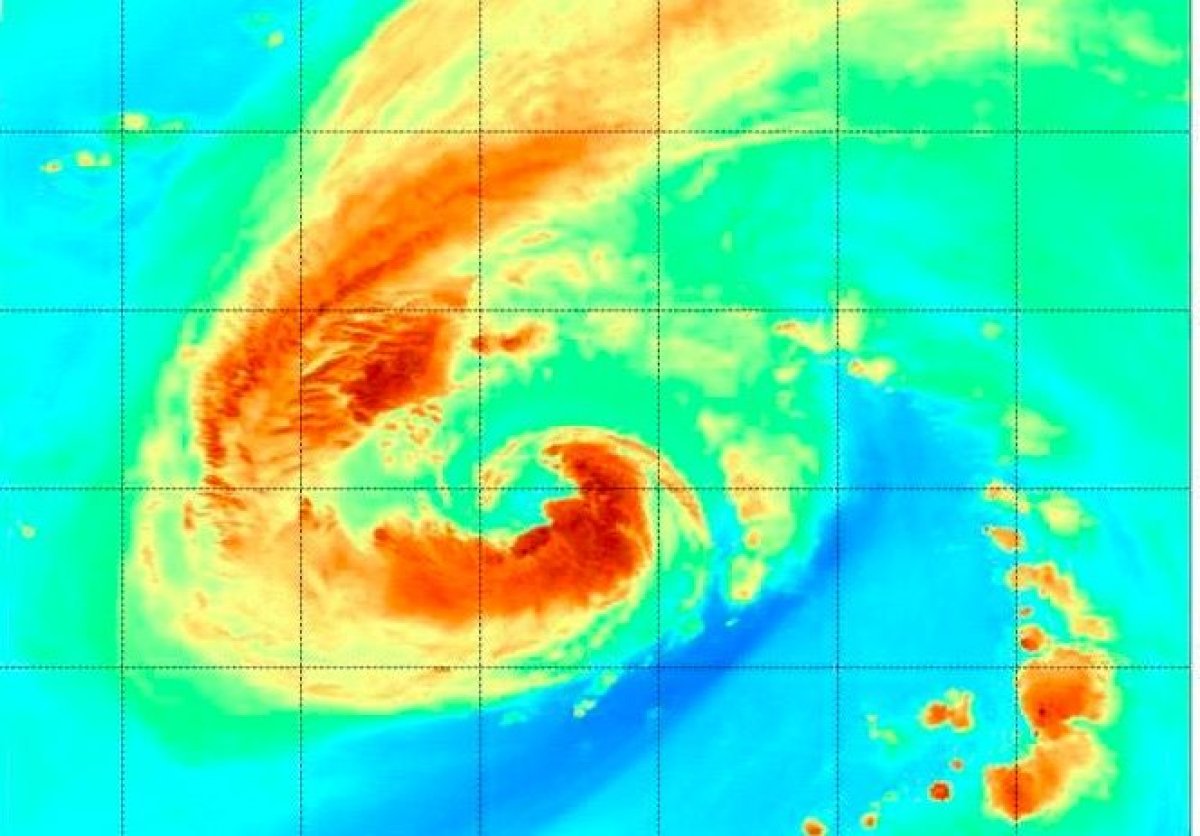After spending a brief period as a hurricane, Leslie was downgraded to a tropical storm. Despite losing its hurricane status, Leslie was still expected to bring potentially dangerous ocean conditions to the Atlantic.
On Friday morning, the National Hurricane Center released a public advisory that said Atlantic Ocean waves would increase along the coasts of Canada and New England as a result of Leslie.
At the time of the advisory, Leslie was about 455 miles northeast of Bermuda with maximum sustained winds of 65 miles per hour. The storm has been slow moving since it formed, and on Friday was moving toward the north-northwest at a speed of 9 miles per hour. The National Hurricane Center forecast that the storm would turn north and decrease in speed on Friday before turning east and east-southeast on Saturday.
While Leslie is no longer a hurricane, the National Hurricane Center classified it as a "large tropical storm" with winds that extended outward up to 290 miles from the center.
The storm has largely reverberated in Bermuda, the Bahamas and the Greater and Lesser Antilles, and was predicted to bring large swells to tge New England and Canadian coasts. While Leslie wasn't forecast to hit Florida, the National Weather Service in Melbourne warned residents about the dangers the distant storm posed.
The National Weather Service explained the storm could bring dangerous rip currents to Florida beaches and cautioned residents against allowing the temptation to surf to cloud their judgment.
"Lighter east winds may make the surf look more inviting today; however, life-threatening rip currents will still be present, particularly through the early afternoon hours due to tidal effects," the advisory said.

If residents do want to go swimming, the National Weather Service said to swim near a lifeguard and to never enter the water alone. Life-threatening rip currents were expected to continue from Saturday until Thursday.
Leslie formed on September 23 as a subtropical storm and was originally forecast to become a short-lived cyclone, expected to dissipate in a couple of days. On September 25, it became a post-tropical cyclone and the National Hurricane Center issued what it believed was the last advisory at 11 a.m. AST. Leslie, however, regained strength on September 28, and a new advisory was issued about its subtropical storm status.
For days, Leslie hovered in the Central Atlantic with little change in strength but became better organized on Monday. Tropical Storm Leslie turned into Hurricane Leslie on Wednesday and the storm was "nearly stationary," according to the National Hurricane Center. At the time, Leslie had hurricane force winds of nearly 75 miles per hour. For a storm to be classified as a hurricane on the Saffir-Simpson Hurricane Wind Scale, the storm must have at least 74 miles per hour winds.
"Leslie refuses to change much in intensity," an advisory on Wednesday said.
On Thursday, as Leslie moved northward, the storm weakened and was downgraded to a tropical storm at 5 p.m. AST. Winds decreased to 70 miles per hour and the National Hurricane Center expected to continue to see the storm weaken over the coming days.
In the latest advisory, the National Hurricane Center forecast that the storm would see a slight weakening over the next few days. Leslie is the 12th named storm in the Atlantic in the 2018 hurricane season, which runs from June to November.
Not far from Leslie in the Atlantic, a second disturbance was identified by the National Hurricane Center. The disturbance is expected to bring showers and thunderstorms to Cabo Gracias a Dios on the eastern border of Honduras and Nicaragua.
The disturbance has a 30 percent chance of turning into a cyclone within 48 hours. Regardless of whether the storm turns into a cyclone, the National Hurricane Center said it would bring torrential rains to the area.
Uncommon Knowledge
Newsweek is committed to challenging conventional wisdom and finding connections in the search for common ground.
Newsweek is committed to challenging conventional wisdom and finding connections in the search for common ground.
About the writer
Jenni Fink is a senior editor at Newsweek, based in New York. She leads the National News team, reporting on ... Read more
To read how Newsweek uses AI as a newsroom tool, Click here.








